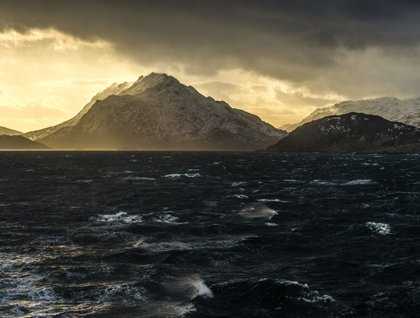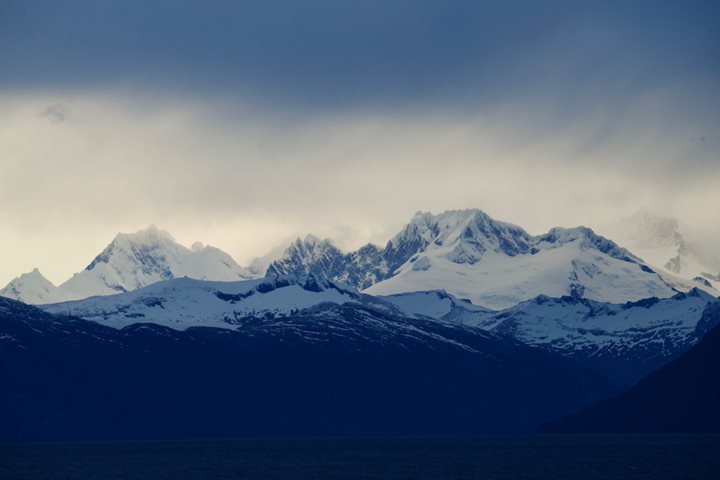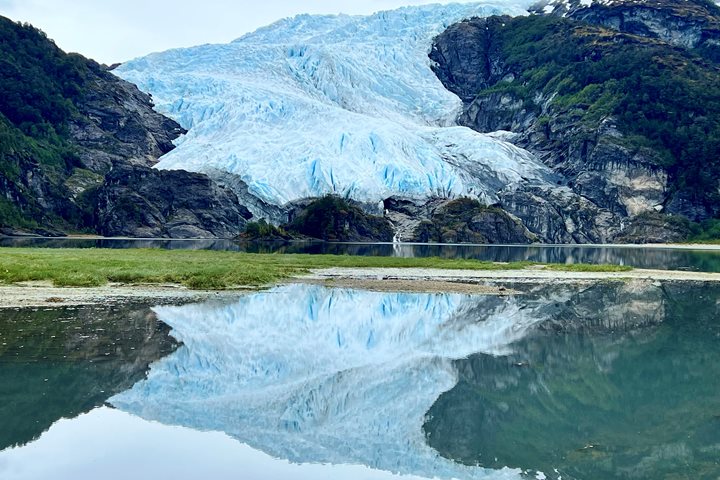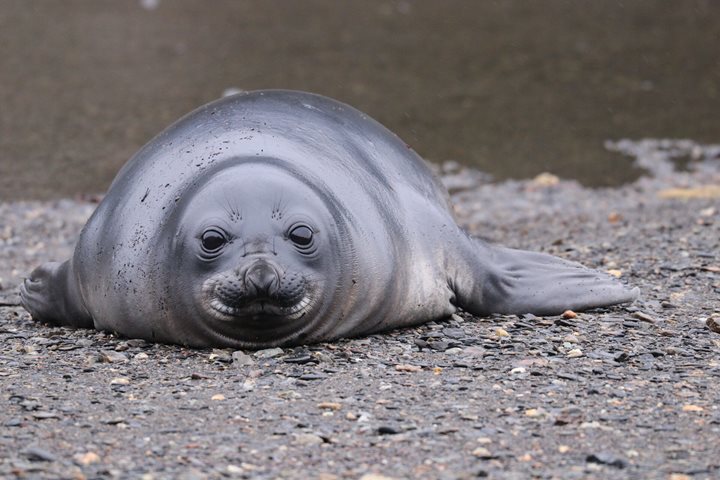In step with most days on this trip today’s plans were at the whim of the western winds. While tempests strong enough to illuminate the ridge tops and transport ocean to air are a sight to behold, they also limit our options. While the landscape of Karukinka Nature Reserve was aglow with the morning sun, we had to give in to the fact that safety was not on our side this morning. Fortunately, this part of the world is ripe with opportunity and we didn’t have to look far for an alternative.
Bordering Karukinka’s western extremity is Alberto De Agostini National Park, named in honor of the Italian priest/photographer/ethnographer/mountaineer who traveled to this area in the early 1900s. Like the next vertebra west along the spin of the Darwin Cordillera (the southernmost mountain range in South America), De Agonstini NP is just as snow-capped, rugged, wildlife-rich, and remote as Karukinka yet, also offers a north/south oriented fjord in which to seek protection from the wind.
Parry fjord terminates near the outlet of two north-flowing glaciers and provided a wind block not only for ourselves but also king crab fishing boats, many species of birds, and at least one leopard seal that hauled herself up onto the ice near Gallegos glacier, our Zodiac cruise location for the morning.
Sliding steeply into the sea the Gallegos glacier is one of many coming from the icefield of the Darwin Range. Despite a heavy rain we spent the morning navigating the freshly calved icebergs that filled this narrow yet geologically diverse tributary to the larger Parry fjord system.
The afternoon took us further north into De Agostini NP to a location for our feet to roam free. Lawrence Bay is one inlet west of Parry fjord yet with a much more gradual rise from sea level. This more accessible topography allowed us a chance to make landfall and access a secluded boardwalk trail through the otherwise marsh-like terrain. Winding through mature southern beech forests, past a living wall of ferns, waterfalls and mosses, and into an open svagnum bog environment, this wind-free trail was a welcomed reprieve from our adventures in Torres Del Paine NP. Before completing our hike a lone ringed kingfisher stole the show (and our exit) by perching on the small hand-bridge we needed to cross to return to the landing. For 15 minutes this fearless bird let us approach to within ten feet, striking various poses in the constantly changing light—a photographers dream situation!
Back aboard National Geographic Explorer, and in the path of the western winds again, we had a chance to appreciate, from the comfort of this trustworthy ship, the weather that helped to sculpt the inspired landscape around us.







